30 Most Deadly Animals on Earth
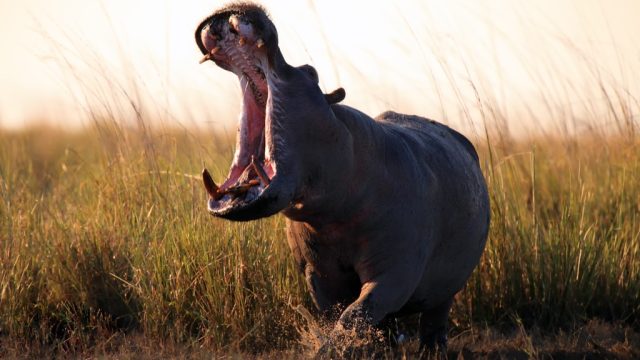
It can be a scary world out there. From 1,000-pound man-eating crocodiles to tiny parasite-carrying insects, humans face many threats in the natural world, especially when it comes to the planet’s deadliest animals. Some are the kind of dramatic killers that make the evening news, like shark attacks or the occasional bear mauling. But just as often it’s an attack at the hands (or fangs or stinger) of a creature that we wouldn’t have imagined could bring sickness and death. Big and small, slow and lightning-quick, here are 30 of the most dangerous animals in the world. Watch out. If you they don’t terrify you in the wild, they’re bound to pop up in your nightmares.
1
Golden Poison Dart Frog
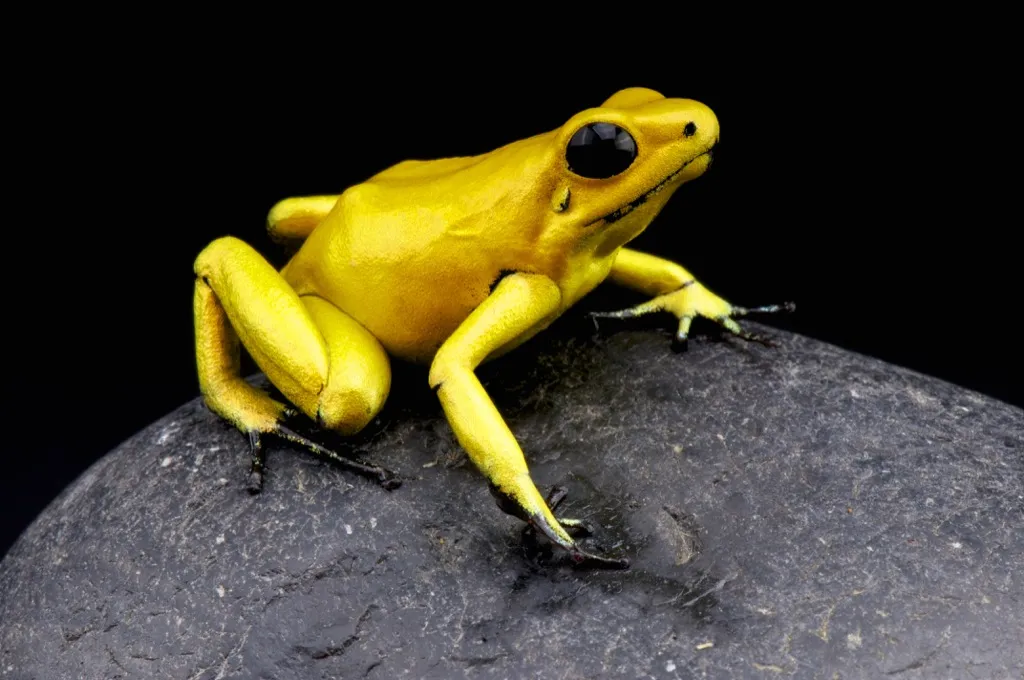
These brightly colored frogs are as beautiful as they are deadly. An inhabitant of the northern part of South America and measuring a mere two inches when fully grown, just one of these frogs packs enough poison (called batrachotoxin) to kill 10 grown men. Unlike venomous snakes or spiders, these creatures don’t need to bite to kill; simply handling them can transfer poison to a person.
2
Box Jellyfish
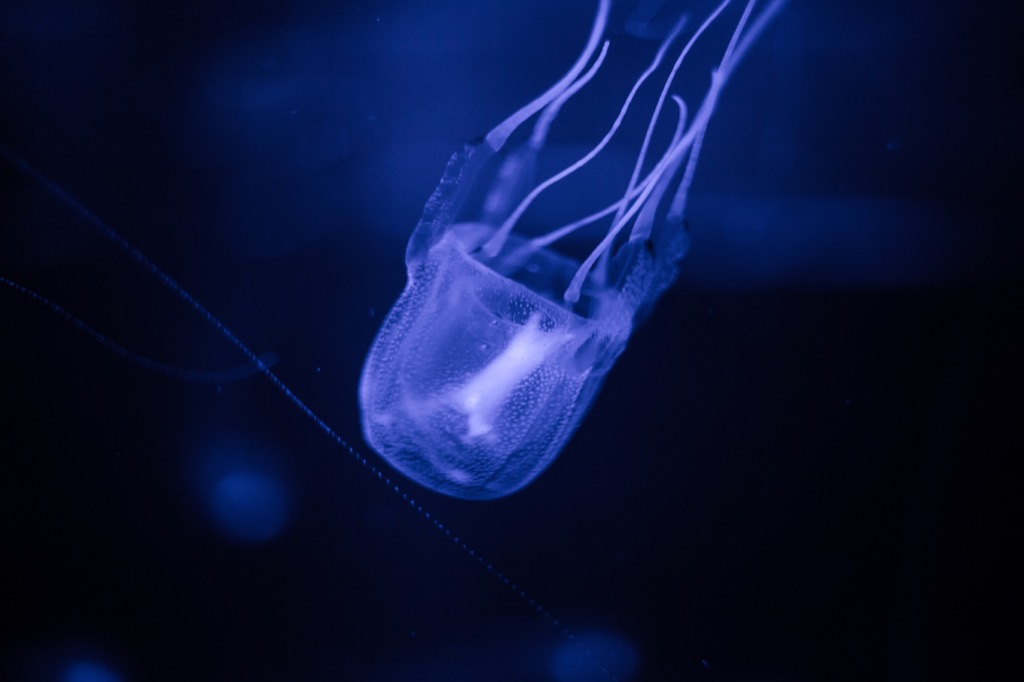
This many-tentacled killer floats off the coast of northern Australia and adjacent seas, and is easy for swimmers and surfers to miss as they head out into deep waters. The National Oceanic and Atmospheric Administration considers it the most venomous marine animal in the world, striking with thousands of stinging cells, known as nematocysts, that strike the victim’s heart, nervous system, and skin cells all at once. No official death tallies exist, but the U.S. National Science Foundation estimates that, in just the Philippines, more than two dozen people die annually from box jellyfish stings; anecdotal evidence puts the global number at more than 100. It just might be one of the deadliest animals that you’re incredibly likely to encounter.
3
Blowfish
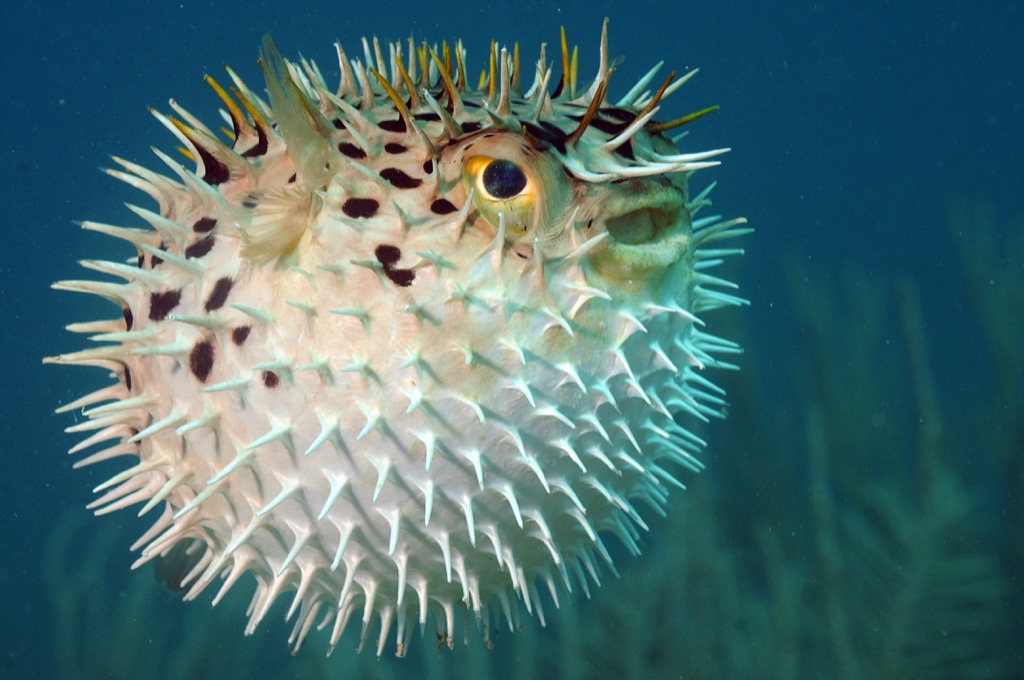
Also known as a pufferfish, these creatures have two impressive defense options: When threatened, they “inflate” their elastic stomachs with water, making them hard for a predator to get its jaws around them. But more devastating is the tetrodotoxin it carries, a poison that not only makes it taste terrible, but is deadly to those fish or humans who make the mistake of trying to eat it. The stuff is around 1,200 times more poisonous than cyanide; one blowfish is capable of killing 30 adult humans.
4
Indian Cobra
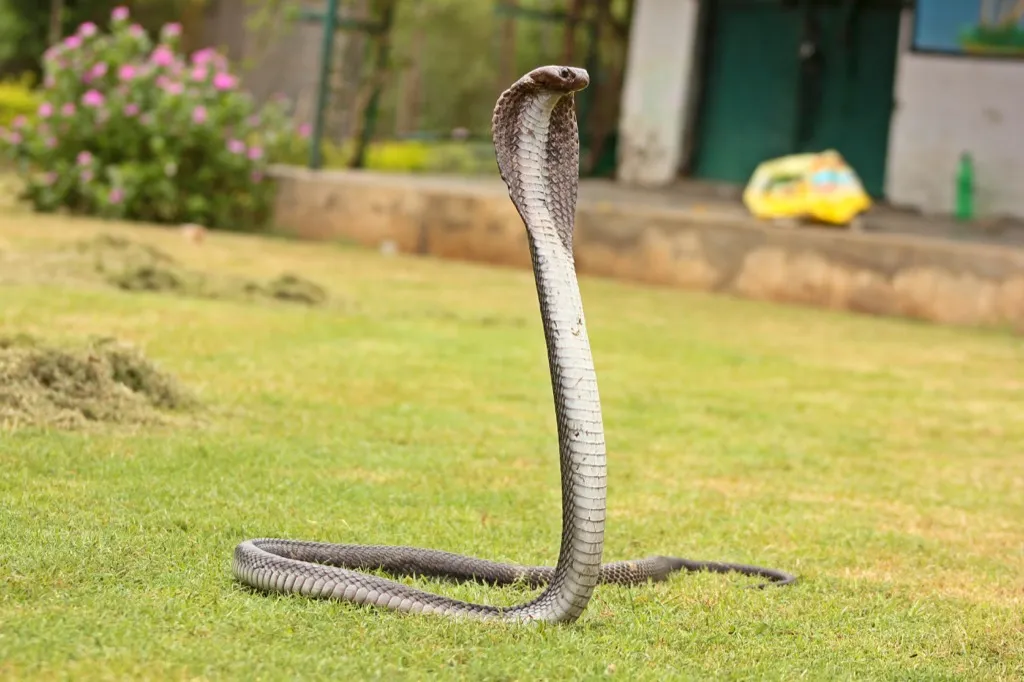
Native to Pakistan, Sri Lanka, and, as per its namesake, India, these hooded creatures are immediately recognizable and can grow five to six feet long. Their bites cause severe pain, swelling, and paralysis, with death occurring in as little as 15 minutes for those left untreated. But what’s perhaps most dangerous about these creatures is their penchant for hunting near houses in rural areas, bringing them into frequent contact with humans.
5
Cone Snail
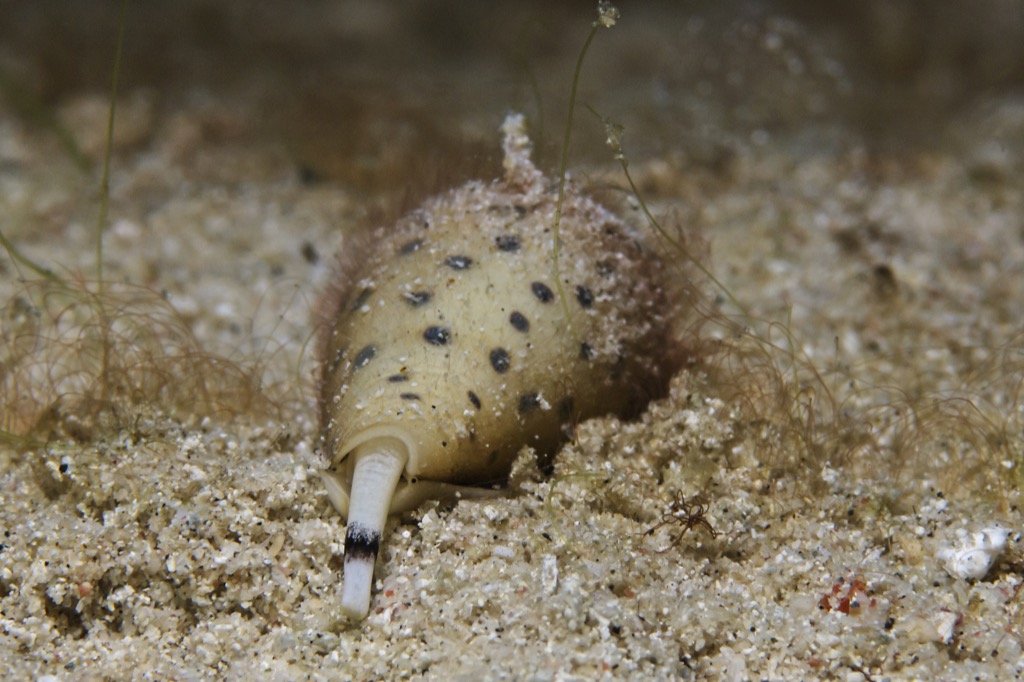
Another of the deadliest animals in the “looks beautiful and harmless, is actually super deadly” category, these brown-and-white snails that live in the warm Caribbean and Hawaiian waters hide a set of harpoon-like “teeth” (actually called “radulae”) packed with conotoxin, which wrecks its prey’s nervous system, paralyzing it before it devours it. “For species of cone snail that hunt fish it is important to have a very fast-acting and powerful venom, because otherwise fish can easily escape from such a slow-moving predator,” Ronald Jenner of the Natural History Museum in London told the BBC.
6
Deathstalker
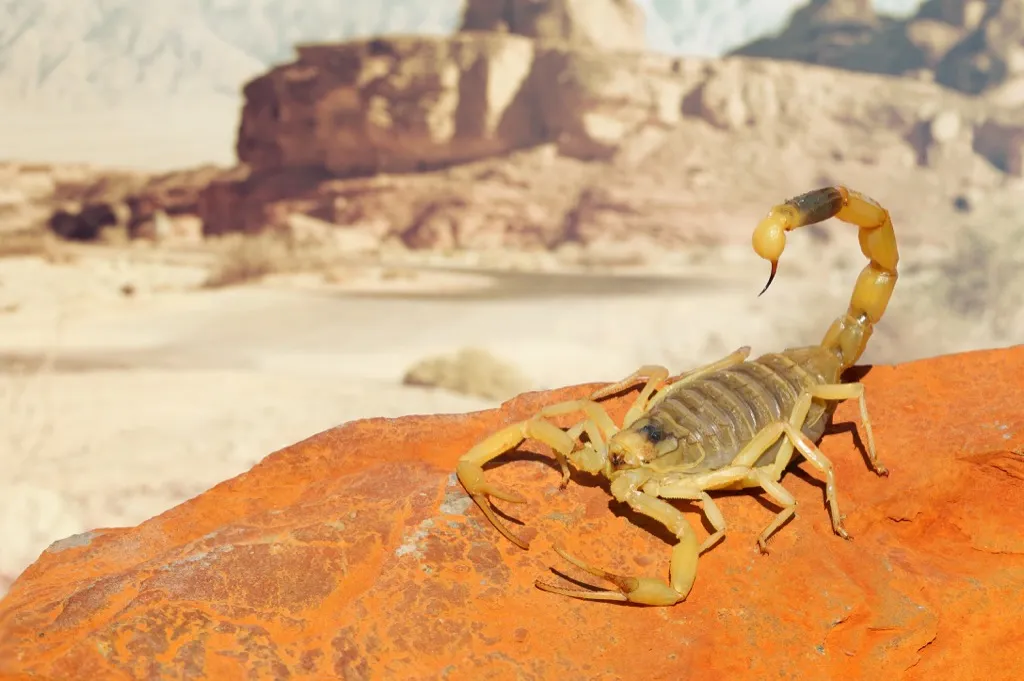
This scorpion is so lethal, it even has “death” in its name. Its highly toxic venom is matched by its incredibly fast lunge, which allows its poisoned stinger to whip over its head at 130 centimeters per second, striking its prey before it even knows what hit it. You’ll find these nightmares in North Africa and dry regions of the Middle East.
7
Stonefish
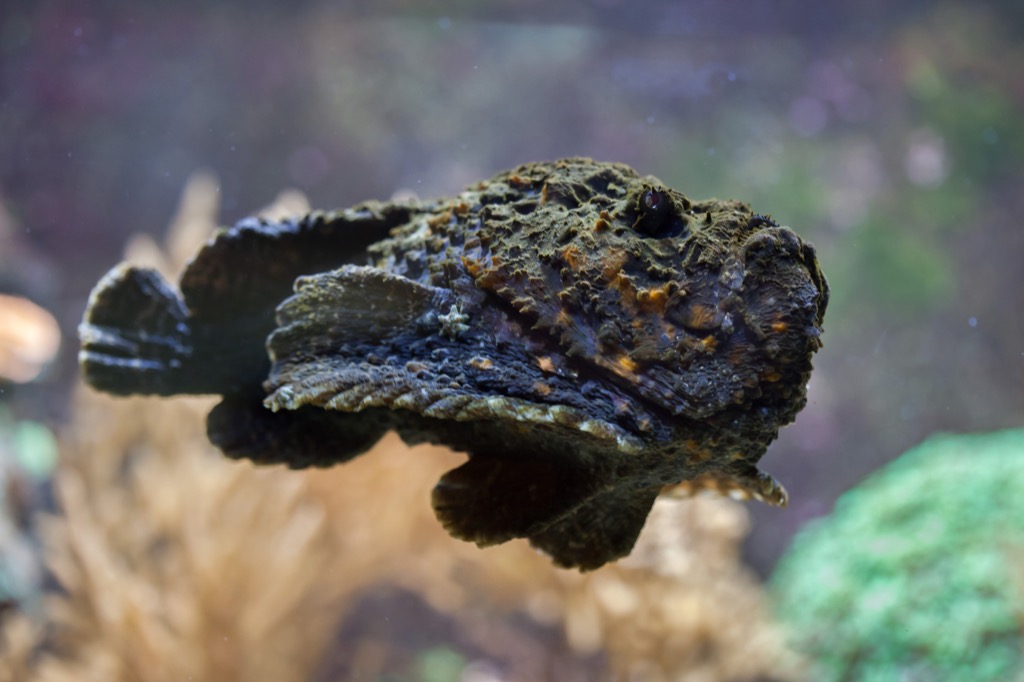
These ugly but hard-to-spot fish camouflage themselves as rocks on the ocean floor, snapping up their prey in their fast-moving jaws. Humans don’t have to worry about getting eaten—but we do have to worry about the poison. Stepping on one of these causes swelling to quickly move through the body, leading to severe pain, difficulty breathing, muscle spasms, and, in extreme cases, paralysis and death.
8
Africanized Honey Bees

Honeybees generally keep to themselves, spreading pollen, manufacturing honey and not bothering humans unless humans bother them (seriously, your average backyard honeybee is not one of the most dangerous animals, and probably wants nothing to do with you). But Africanized honeybees, the result of a 1957 crossbreeding experiment gone wrong, are far more aggressive, likely to swarm, and willing to chase their victims for miles—and yes, when the chase ends, it’s deadly. They’re also growing increasingly common in the southern and western U.S. They’re one of the deadliest animals that are also our own, human creation.
9
Lions
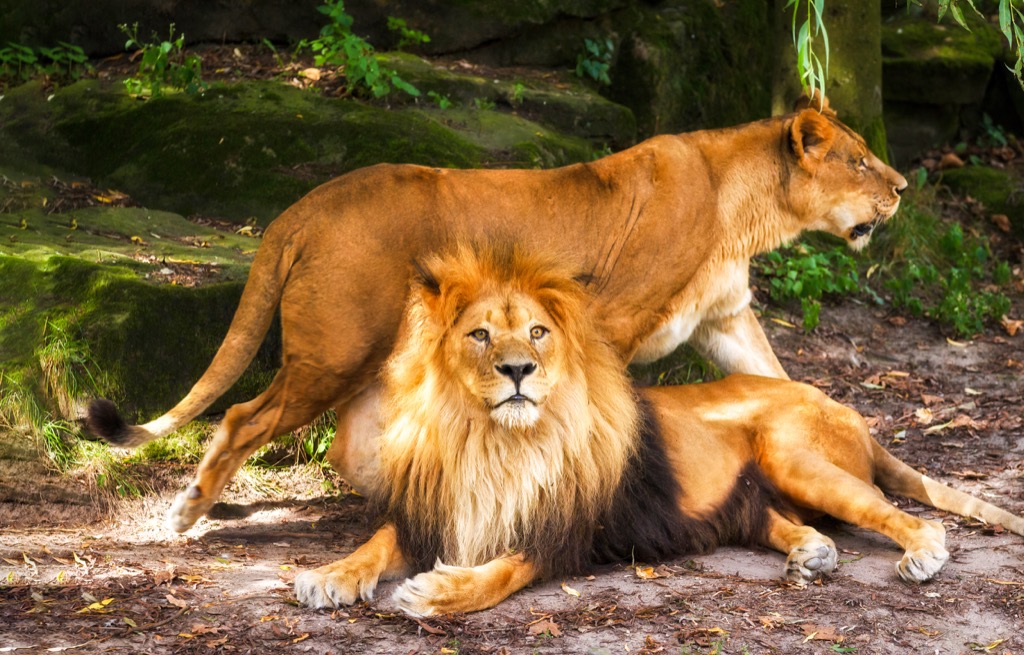
These sharp-toothed animals don’t actually rack up as many kills as you might expect, but they are responsible for some serious damage to those humans unfortunate enough to cross them. According to estimates in Nature, they kill an average of 22 people a year—in Tazmania alone.
10
Polar Bears
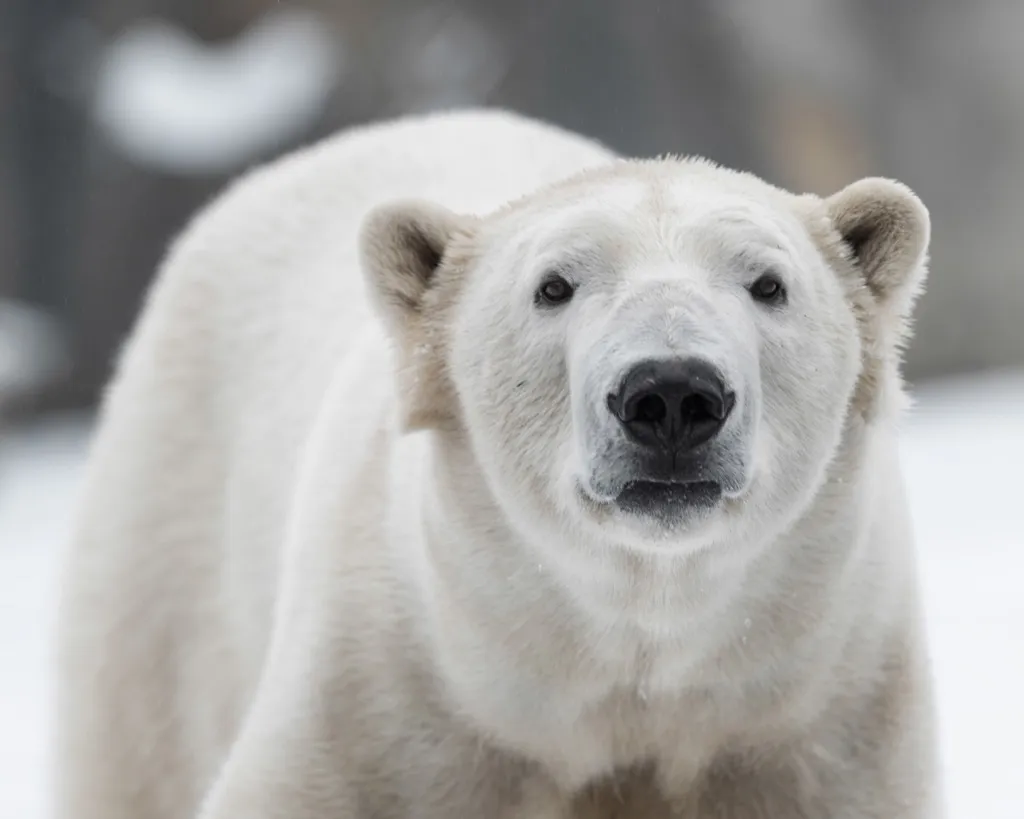
These hulks are the largest carnivore in the world and have no natural predators, outside of humans. While they tend to keep to themselves unless harassed or hungry, when they do attack, the results are brutal and deadly. Recent studies have found that polar bears‘ aggression toward humans is growing, potentially due to climate change forcing them closer to the humans in their midst.
11
Boomslang
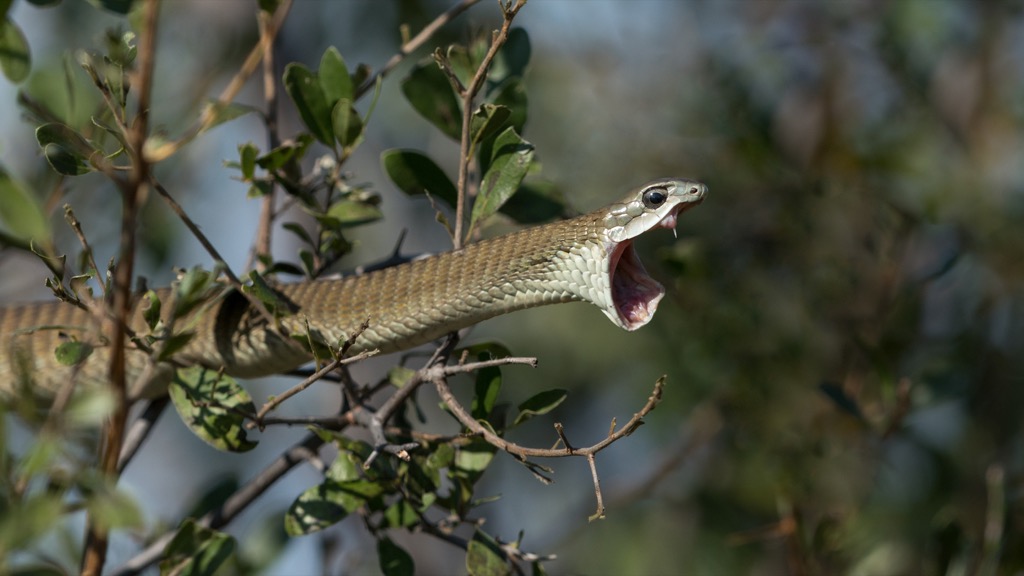
These snakes deliver hemotoxin that disables blood clotting in their prey, opening its mouth to nearly 180 degrees to chomp its prey with its rear fangs. The poison causes tissue and organs to degenerate, leading to hemorrhaging and bleeding from every orifice. It can take five days for the victim to die of internal bleeding.
12
Tsetse Fly
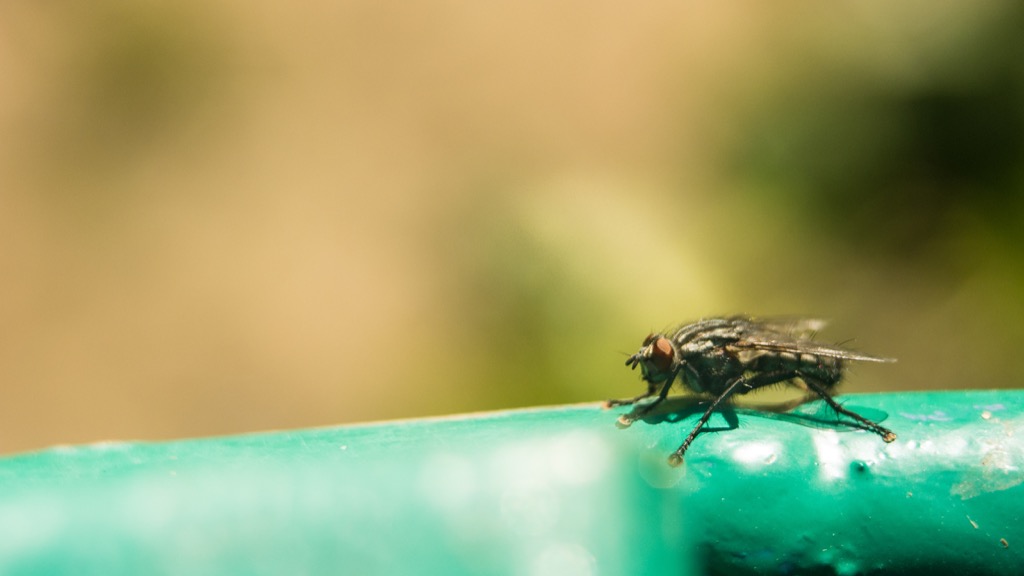
Fierce creatures sometimes come in small sizes. At no more than 17 milimeters, these flies may not look like much, but they are plenty lethal. They carry with them protozoan parasites known as Trypanosomes which cause what’s known as African Sleeping Sickness (with symptoms including poor coordination, disrupted sleep and eventually death). In 2009, slightly fewer than 10,000 cases were recorded, and, though the World Health Organization hopes to eradicate the disease by 2020, the tsetse flies continue to menace their natural habitats of the Sudans, the Democratic Republic of Congo, and Angola.
13
Mosquito
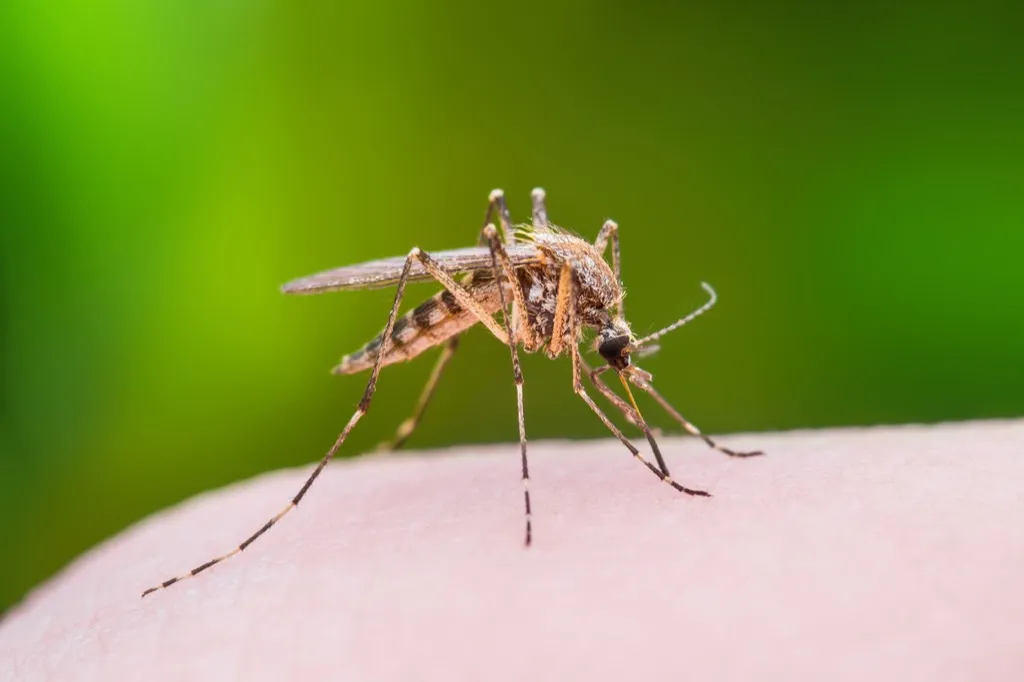
Perhaps the smallest and the most deadly creature on this list, the common mosquito measures little more than three millimeters, but carries with it malaria, dengue fever, yellow fever, Wst Nile virus, Zika virus, and numerous other lethal diseases. Responsible for the deaths of about 725,000 people each year, mosquitos are a threat to more than half of the world’s human population, according to the WHO. The scariest part? These tiniest of the deadliest animals are, more likely than not, in your home as we speak.
14
Great White Shark

Though they are hardly as aggressive as Jaws and other films might lead you to believe, you still don’t want to cross one of these predators. The animal has made a recorded 314 unprovoked attacks on humans since tracking began, killing 80 people all told (a modest number compared to, say, the mosquito). With an estimated 300 teeth and terrifyingly strong sensory and tracking skills, these beasts have earned their reputations.
15
Hippopotamus
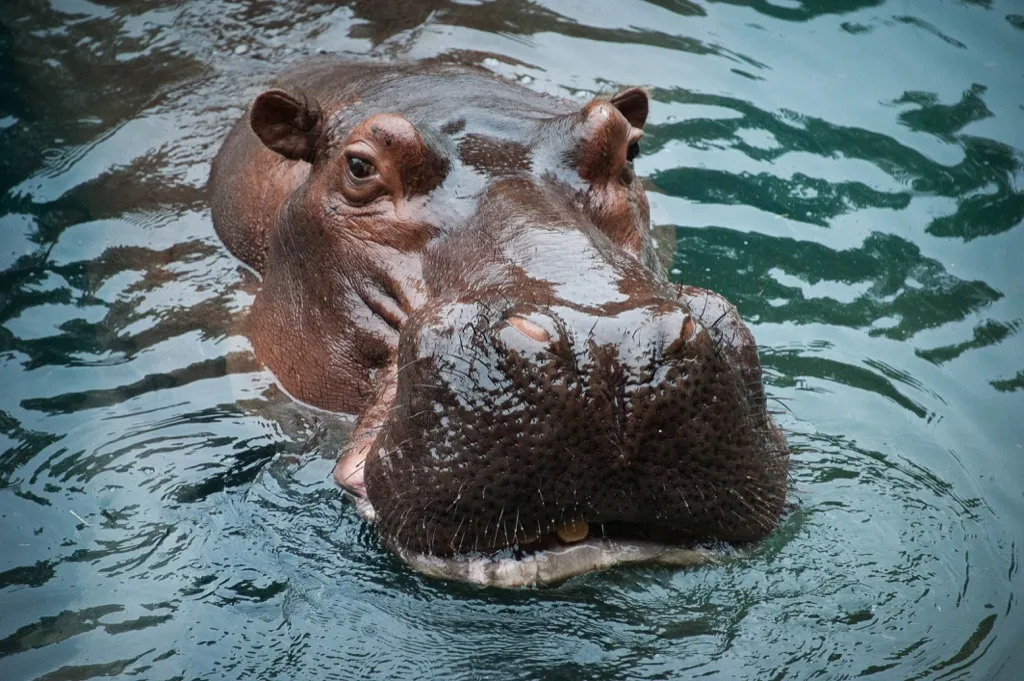
These guys may look ungainly and goofy, but these animals can be frightening: they have an aggressive streak and can run up to 14 miles an hour, or about twice as fast as most people jog. And if you’ve seen them yawn, you know how sharp those teeth can be. According to the WHO, hippos are responsible for about 500 deaths every year.
16
Freshwater Snails
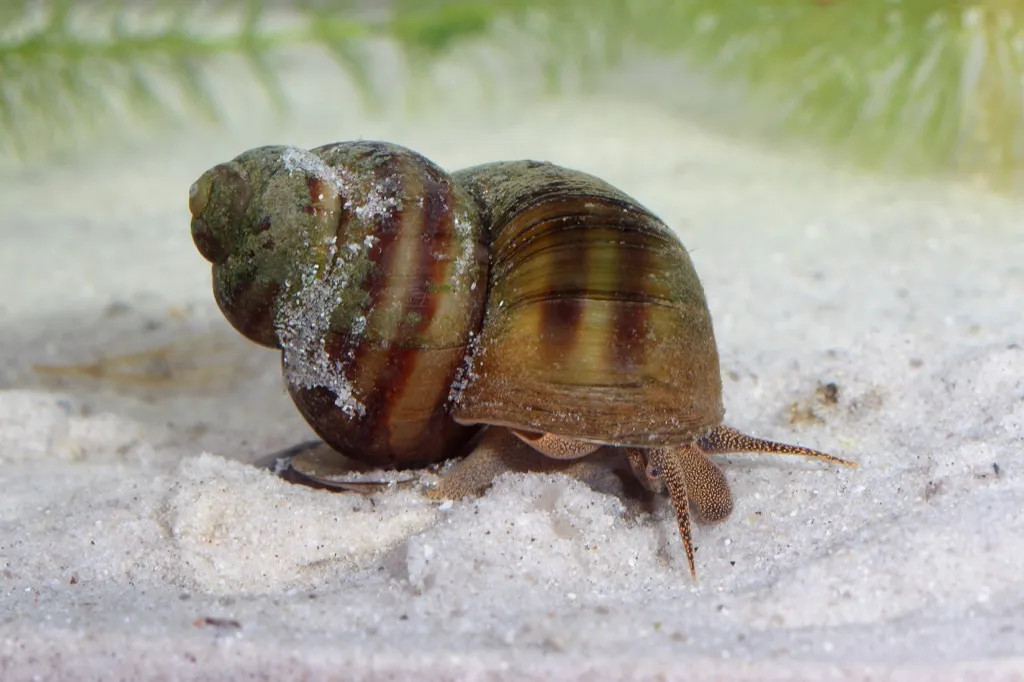
These creatures carry parasitic worms, which infect humans with the disease schistosomiasis, causing abdominal pain, blood in the urine, and eventually death. The WHO estimates that schistosomiasis causes anywhere from 20,000 to 200,000 deaths a year
17
Estuarine Crocodiles
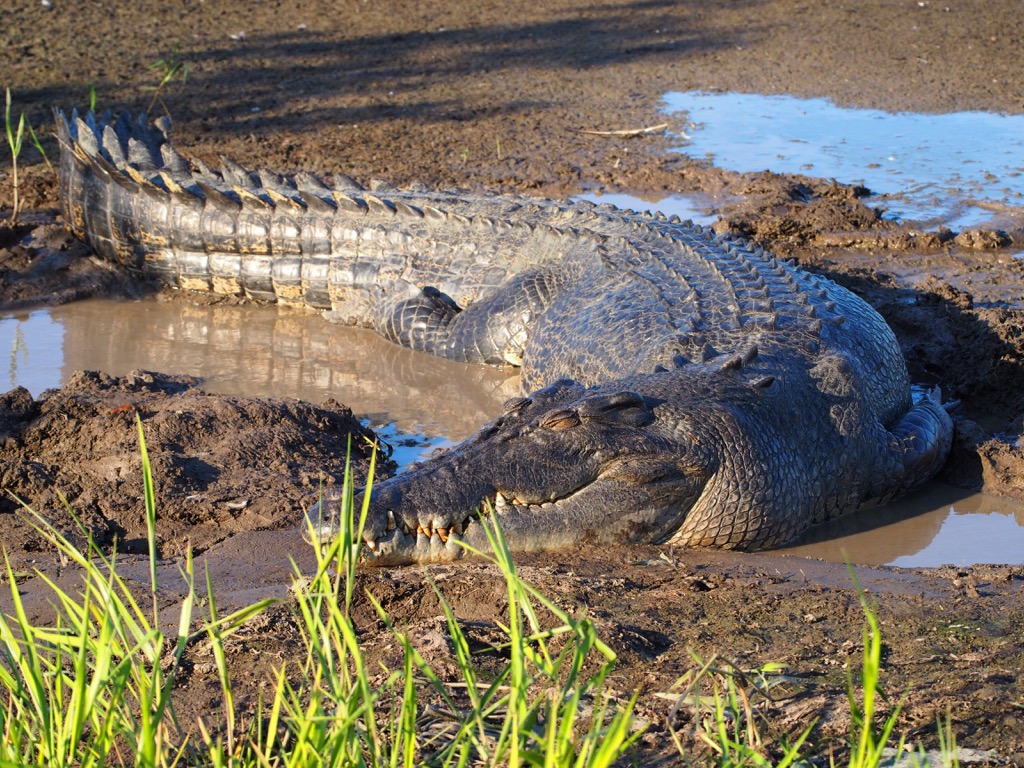
These guys can get big—17 feet long and up 1,000 pounds. (Though 23-footers are not unheard of.) They hide out in brackish and fresh waters of eastern India, Southeast Asia, and northern Australia, emerging from the water to clamp down on water buffalo, monkeys, wild boars—and the occasional person. Of all the crocodilian species, these are considered the most likely to feast on people.
18
Ascarias Worm
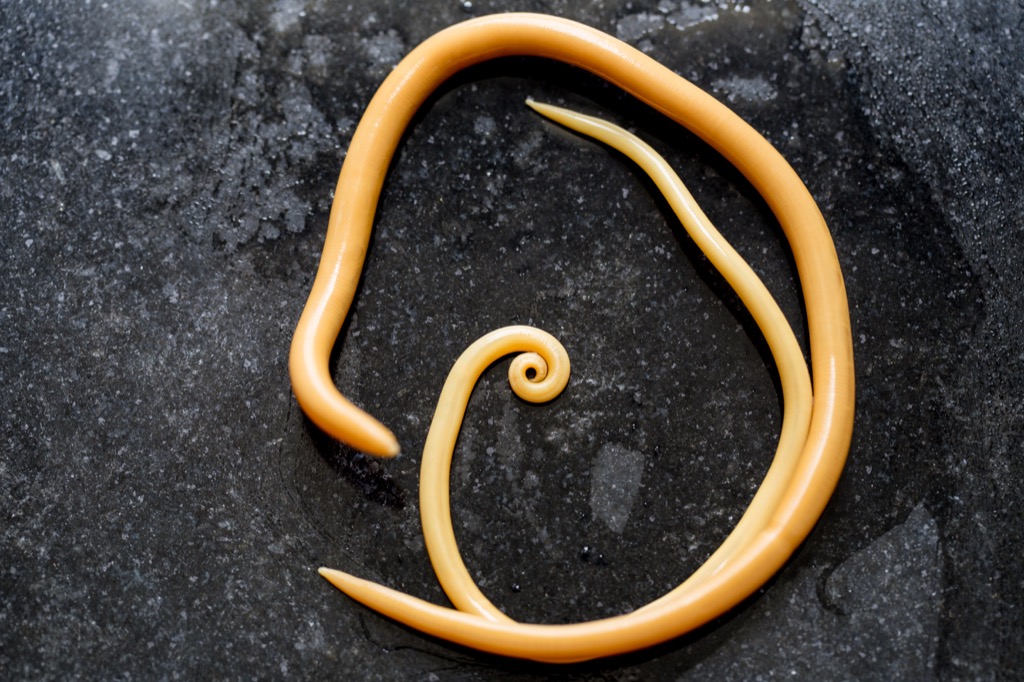
A sneaky and insidious killer, this roundworm infects the small intestine and eventually causes death in its hosts. The WHO reports that this creep kills an average of 2,500 people a year.
19
Black Mamba
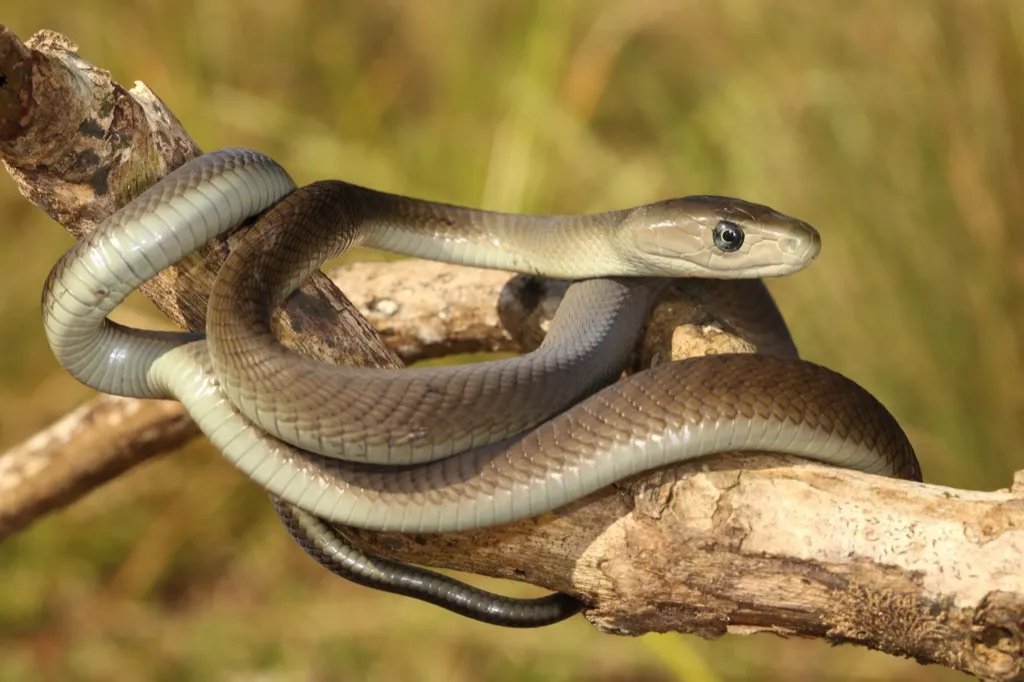
There’s a reason this was the codename of Uma Thurman’s Kill Bill character. These reptiles are crazy venomous and very fast, making them a very dangerous creature to encounter in its native habitat of southern and eastern Africa. It can grow up to 14 feet long and moves up to 12.5 miles per hour (making it the fastest snake out there). But most devastating is its venom, which combines neurotoxins and cardiotoxins into a lethal blend, which has the strength to kill 10 people with a single bite. For all these reasons, it’s considered the world’s deadliest snake.
20
Hyenas
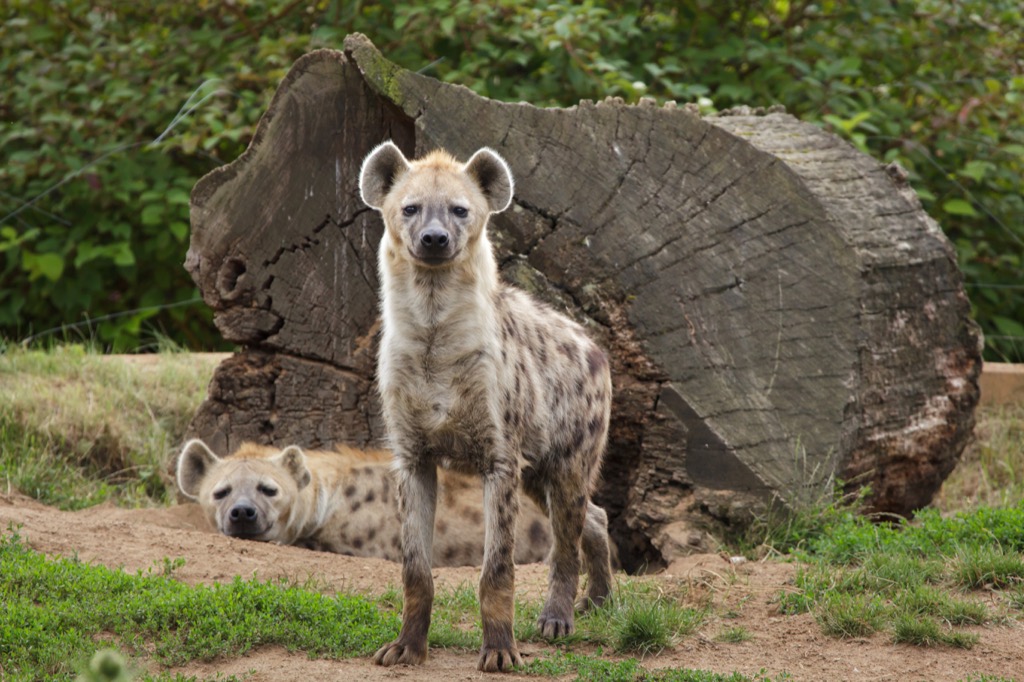
Though they generally avoid humans, preferring to feed on corpses rather than take on live people, a pack of these cackling creatures can devour an entire zebra—including bones—in less than a half hour. In Ethiopia and elsewhere, they have also been known to encroach on urban areas, brutalizing the city’s homeless.
21
Brazilian Wandering Spider
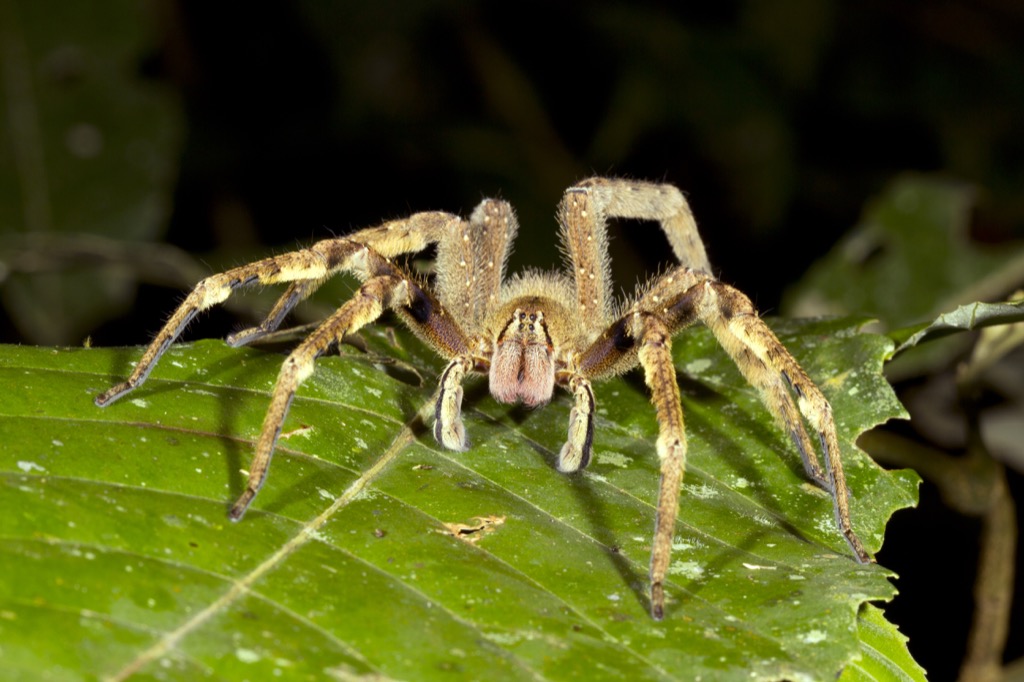
The world’s most venomous spider is extra dangerous due to its habit of, well, wandering—into homes, cars, banana bunches, and other places where they are likely to come into contact with people. A bite from one of these creepy creatures first causes sweating and burning, followed by reduced blood pressure, blurred vision, and, if treatment isn’t sought, death.
22
Dogs
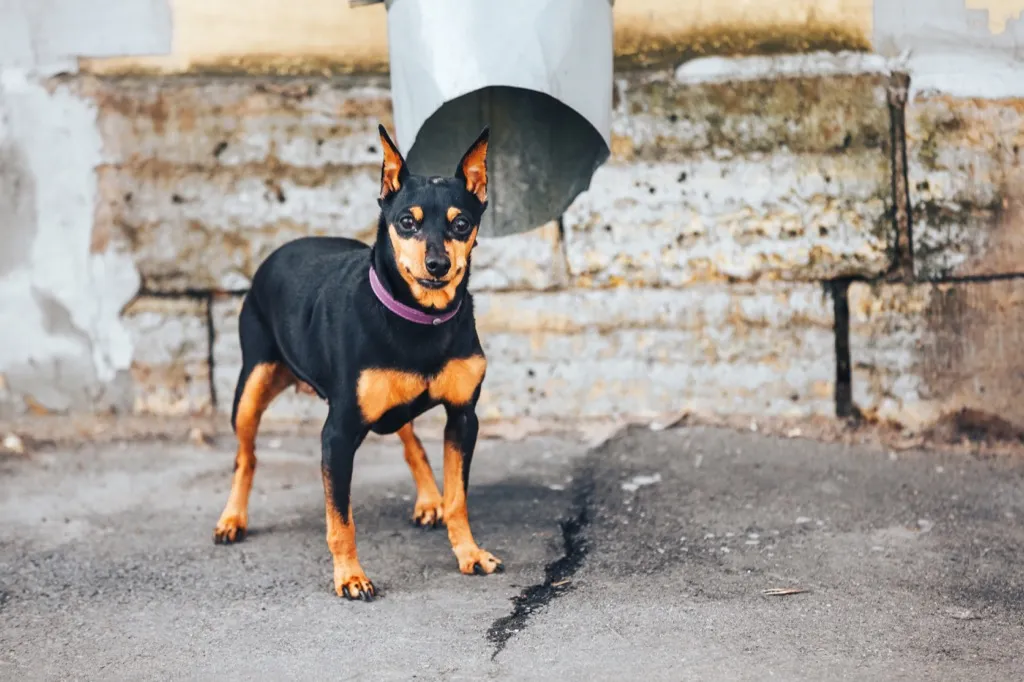
Don’t worry, your pet doesn’t fall into this category, and isn’t one of the world’s deadliest animals. According to the WHO, rabid dogs are responsible for about 25,000 deaths per year throughout the world. Countries with large populations of strays see correspondingly high rates of rabies (about 36 percent of rabies deaths occur in India each year, most of which come from people coming into contact with rabid dogs).
23
Cape Buffalo
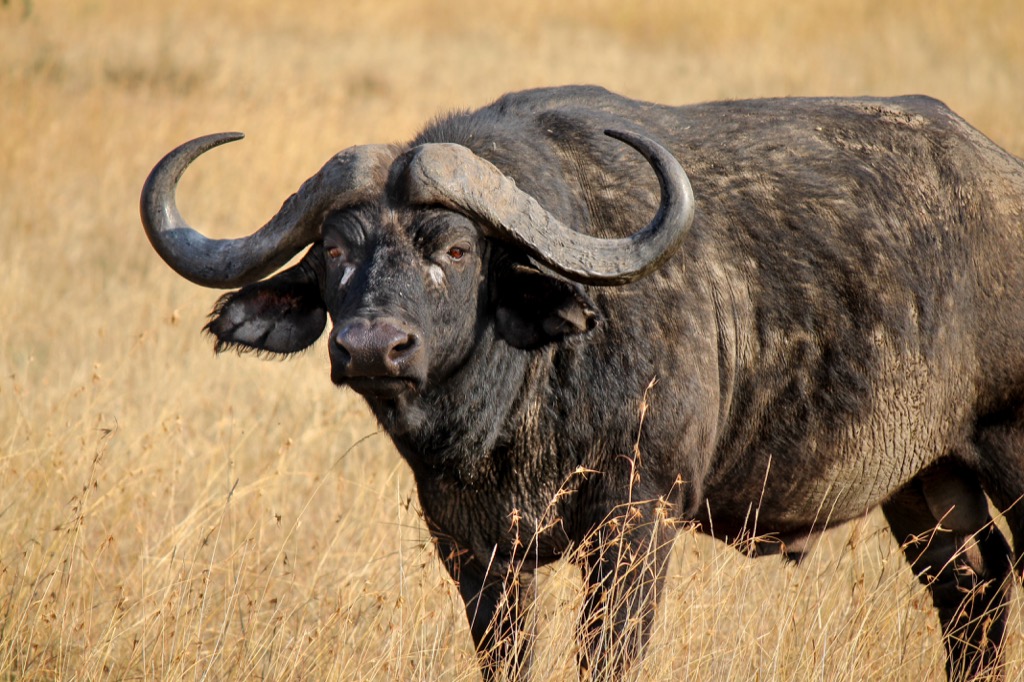
Though we usually think of buffalo as endangered or vulnerable, this particular species is one that may be more dangerous to humans than vice versa. Living in sub-Saharan Africa, they tend to keep to themselves, grazing and hanging around their favorite watering holes—unless their young are threatened. Thanks to those brutal and fast-moving horns, they are reputed to have killed more humans in Africa than any other creature. The Cap Buffalo is seriously one of the deadliest animals you don’t want to mess with.
24
Honey Bees
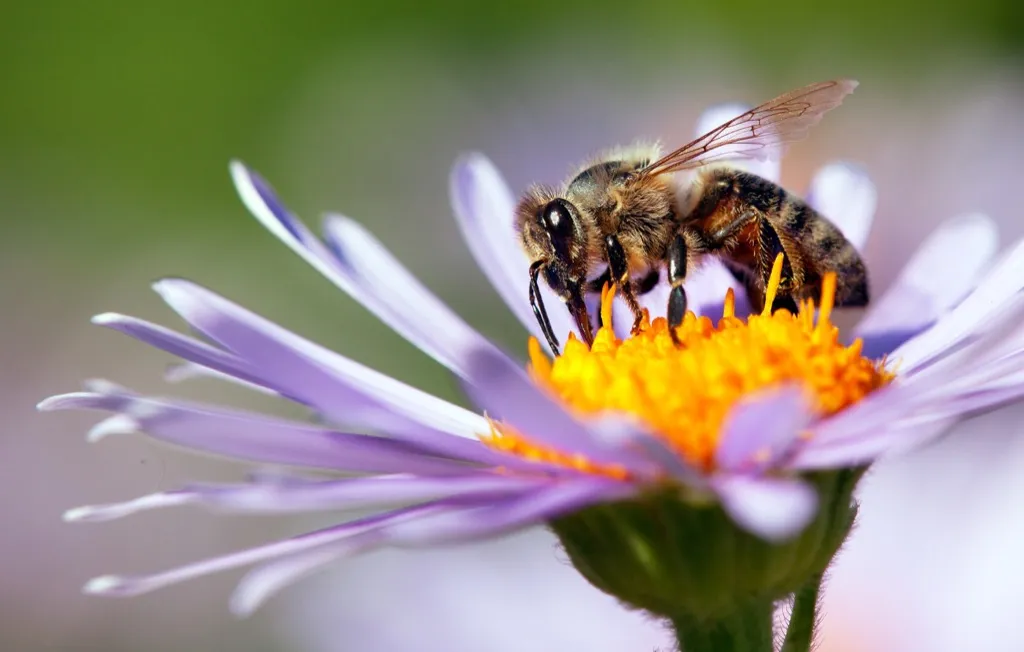
Of course, for those allergic to them, even otherwise peaceful bees can be deadly. In a typical year, according to the CDC, as many as 100 people in the U.S. alone die from such stings.
25
Tapeworms
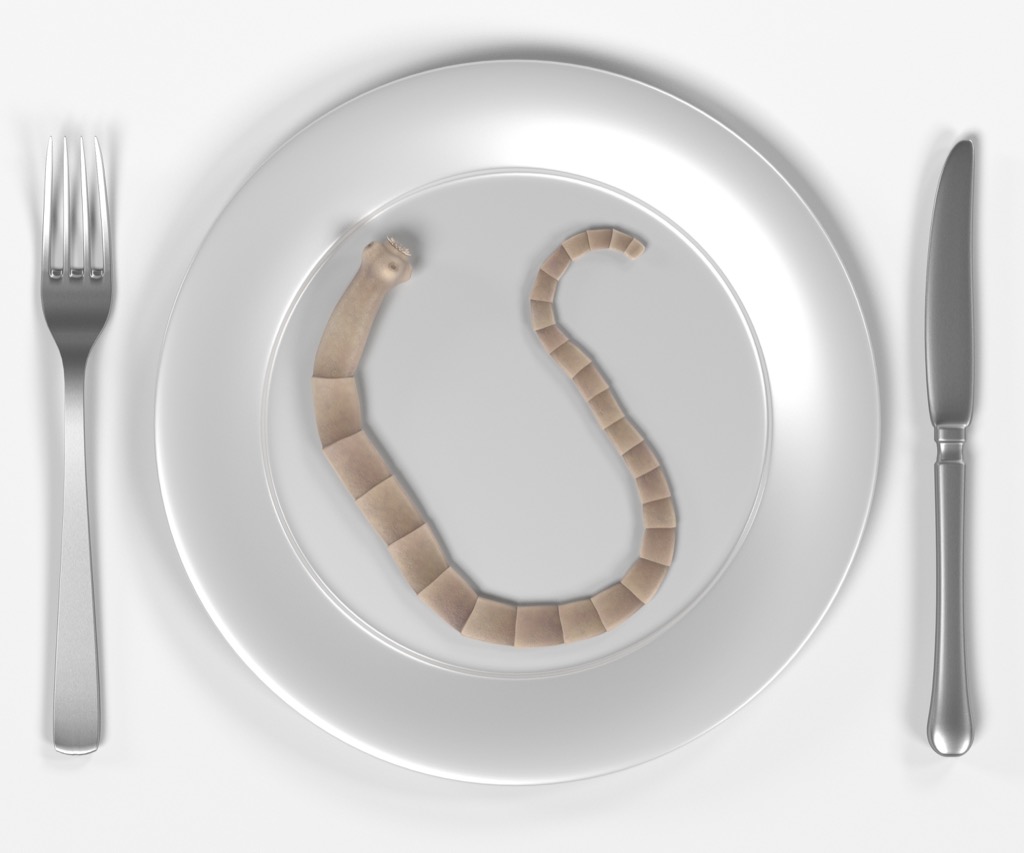
These killers are much quieter than toothy sharks or lions, but they’re arguably nastier, living as parasites in the intestines of their hosts, leading to malnutrition and diarrhea. According to the WHO, these creatures have been the cause of an estimated 2,000 deaths.
26
Bull Sharks
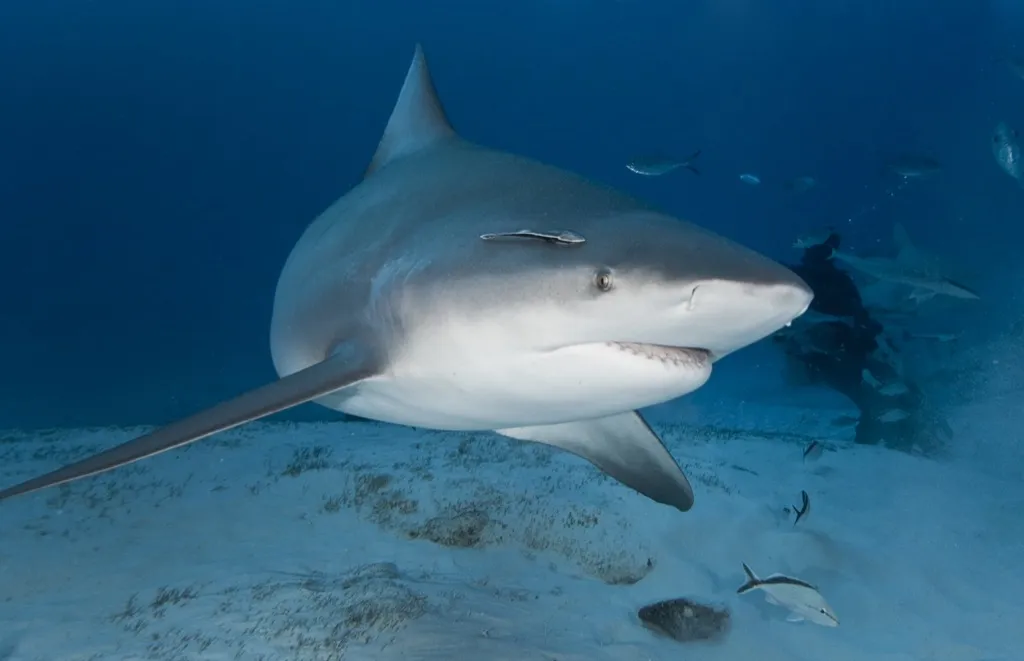
This species is considered by shark experts as more dangerous than the great white, because they are aggressive and comfortable in brackish and freshwater, allowing them to inhabit rivers and tributaries near highly populated areas. As such, they’ve been responsible for the deaths of 27 people over the years.
27
Elephants
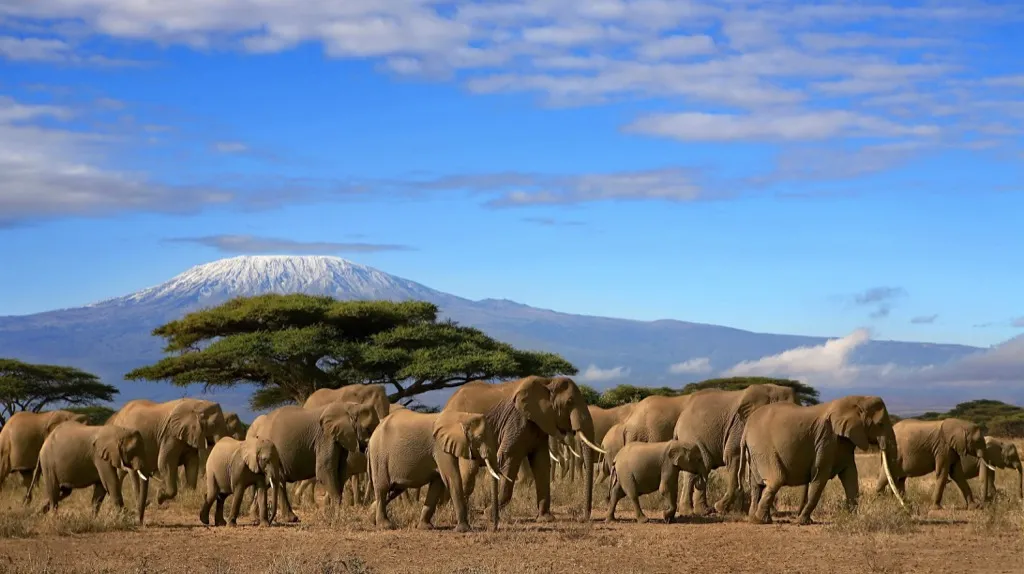
Similar to the hippo, the elephant is generally a vegetarian but can throw their weight around when they need to—and when they are being harassed or pressured, they can be brutal. “I do think that elephants are becoming more aggressive towards humans in very compressed areas where they are being shot at and harassed,” Caitlin O’Connell-Rodwell, a biologist at Stanford University in Palo Alto, California, told National Geographic.
28
Kissing Bugs
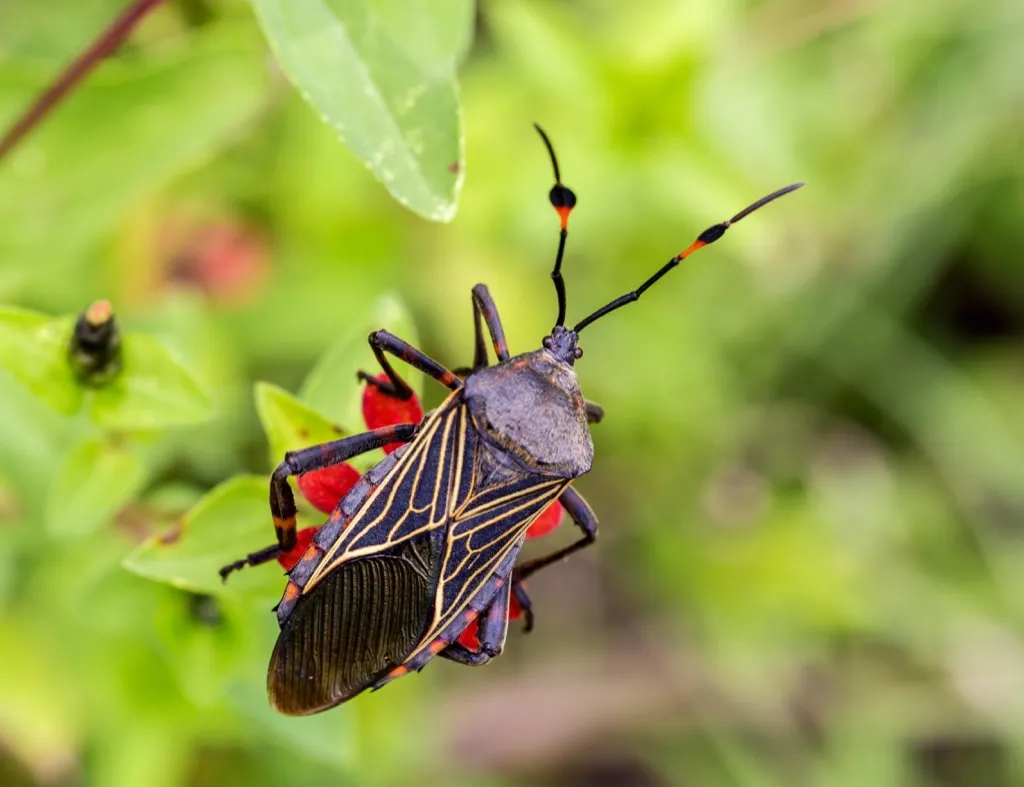
A deceptively sweet name for a very nasty customer. These insects bite humans on their lips and faces as the sleep, depositing the infectious parasite of Trypanasoma cruzi as they do. This then enters the bloodstream and leads to Chagas disease, which can lead to cardiac arrest or intestinal dysfunction. Chagas from kissing bugs causes an estimated 10,000 deaths, and has earned the critter its other nickname: Assassin Bug.
29
Wolves
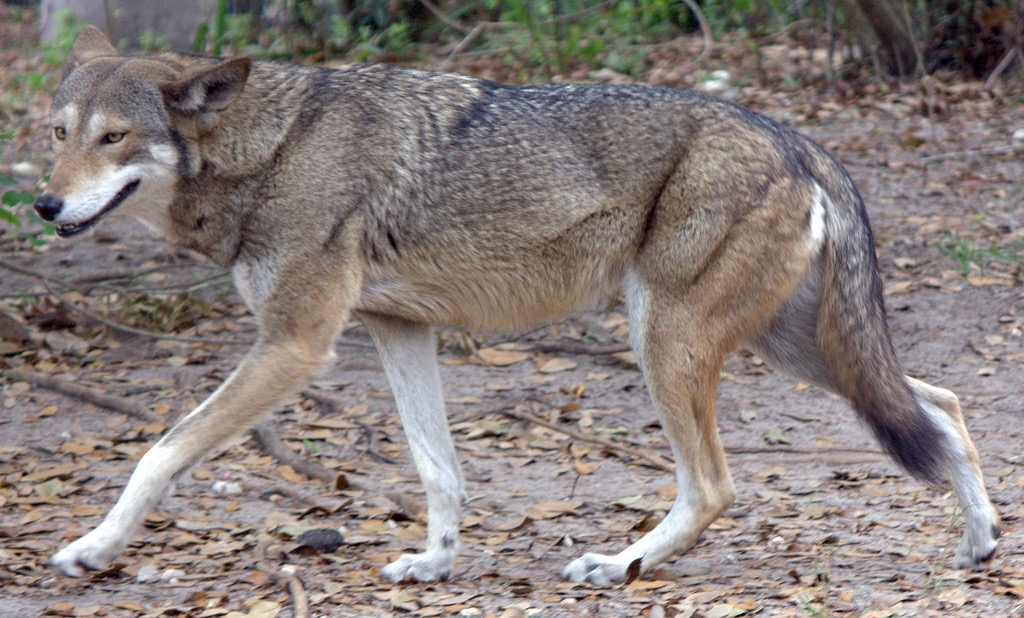
Hardly as dangerous as kissing bugs or tsetse flies, wolves are nonetheless not the creatures you want to encounter unexpectedly. According to researchers, these creatures kill, according to the World Wildlife Fund, an average of 10 people per year—modest, yes, but still not enough to take them off this list of the deadliest animals.
30
Humans
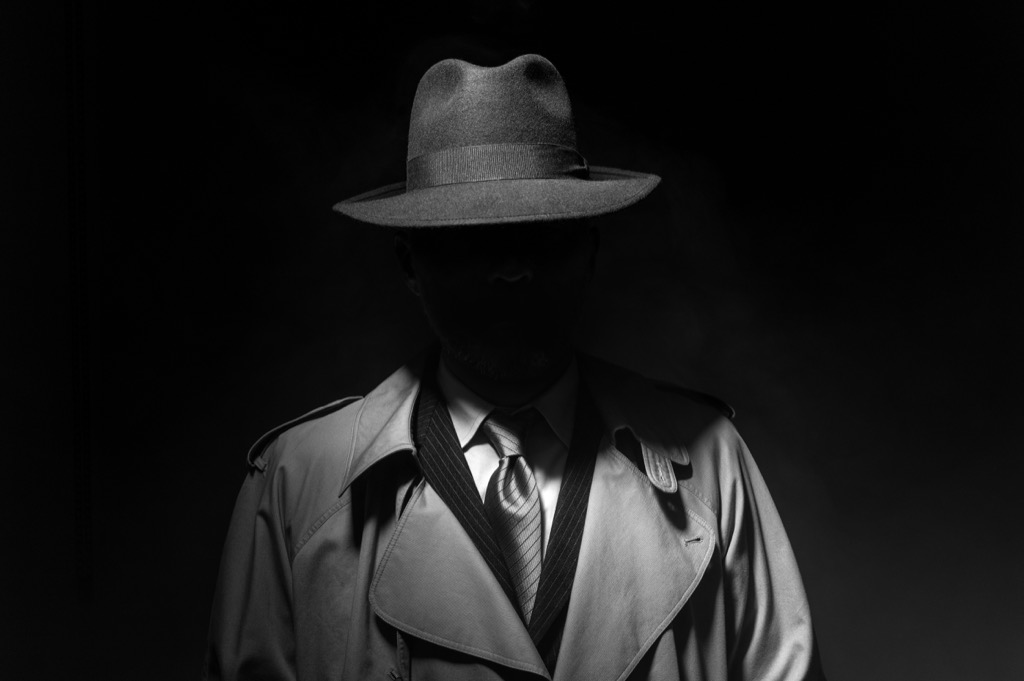
Hey, we’re animals, too—and lethal ones, at that. According to the United Nations Office on Drugs and Crime, 2012 saw about 437,000 homicides in which a person was killed by another person. After the malaria-carrying mosquito, we may be the deadliest animals in the world.